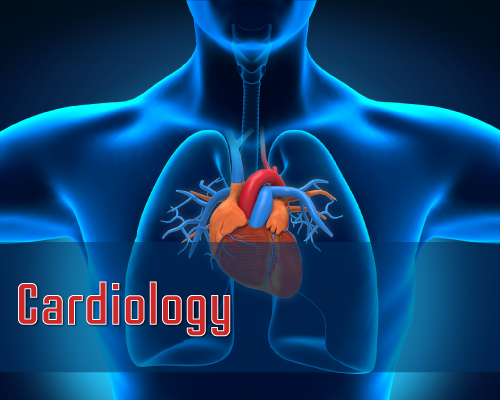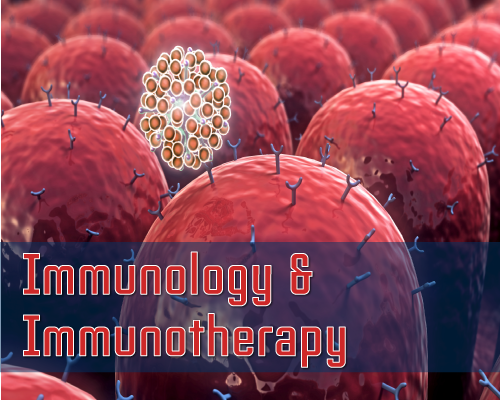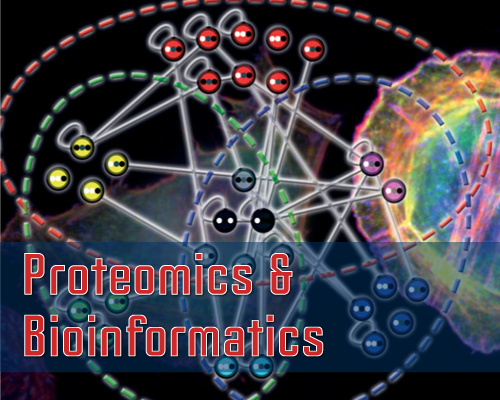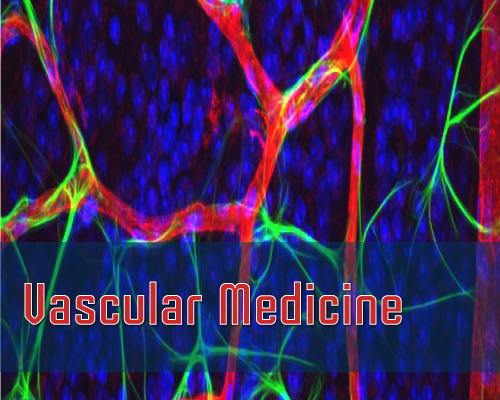Gloria Bertha Vega-Robledo1*, Diego Oliva-Rico2 and Guadalupe Rico-Rosillo1
1Unidad de Medicina Experimental, Facultad de Medicina, UNAM. Mexico City, Mexico
2Unidad de Investigacion Biomedica en Cancer, Instituto Nacional de Cancerologia-Instituto de Investigaciones Biomedicas, Universidad Nacional Autonoma de Mexico, Mexico City, Mexico
*Address for Correspondence: Gloria Bertha Vega-Robledo, Unidad de Medicina Experimental, Facultad de Medicina, UNAM. Mexico City, Mexico, Fax: + (55) 5623-2332; E-mail: gloriavr@liceaga.facmed.unam.mx
Dates: Submitted: 18 October 2017; Approved: 26 October 2017; Published: 28 October 2017
Citation this article: Vega-Robledo GB, Oliva-Rico D, Rico-Rosillo G. Adipose Tissue: Function, Adipokines, and Alterations Related with Psoriasis. Sci J Clin Res Dermatol. 2017;2(2): 036-042.
Copyright: © 2017 Vega-Robledo GB, et al. This is an open access article distributed under the Creative Commons Attribution License, which permits unrestricted use, distribution, and reproduction in any medium, provided the original work is properly cited.
Keywords: Adipose tissue; Adipocyte; Adipokines; Obesity; Psoriasis
Abstract
Adipose tissue considered as an organ with neuro-immuno-endocrine functions, participates in the homeostasis of the organism. It has a great plasticity and functional variability according to the nutrient intake or with the increase or decrease of its tissue volume, which modifies both the function and the number of the cells that integrate it or reach it. The elements released abnormally by these cells, among others cytokines and adipokines, cause inflammation both local and systemic, mainly when they come from the visceral adipose tissue and can affect diverse organs like the liver and the cardio-vascular system. The damage may also be manifested in the skin by elements from both the local and visceral subcutaneous tissue.
Some inflammatory skin diseases have been associated with the physiological state of adipose tissue and have shown reciprocal expression between inflammatory and lipid genes in the injured skin. It has been pointed out that obesity implies an increased risk of inflammatory skin diseases including eczema, atopic dermatitis and psoriasis, the latter being related to the increase of adipokines and the metabolic syndrome.
Introduction
The adipose tissue initially considered as a useful attachment to provide protection, heat and energy, has surpassed these no less important activities and as its study advances, it has been positioned as an organ with neuro-immuno-endocrine functions. Because of the production of molecules such as hormones, antimicrobials, cytokines and adipokines, the adipose tissue participates in the function of various cells and organs allowing it to intervene in the defense and homeostasis of the organism.
It is the organ with greater plasticity, since it regenerates after surgery and increases or decreases its size with energetic and nutritional changes, in addition to the capacity that in certain conditions, like chronic inflammation, has the adipocyte to adopt phenotype and functions very similar to those of the macrophage [1]. Approximately one tenth of the total fat is renewed every year, due to the death of adipocytes and adipogenesis; however, it has been pointed out that an adipocyte can live up to nine years.
When there is obesity, the function of adipose tissue is modified; the excess of molecules released, not only by the altered adipocytes, but also by the rest of the local cells and of the new entrance into this tissue cells, originates, among other things, a low but constant level of inflammation. Vascular and extracellular matrix [2] are added to the remodeling of white tissue by hypertrophy and adipocyte hyperplasia.
According to the above, there is fibro-inflammation in sustained obesity, which exacerbates its functional alteration; there is resistance to insulin and favors the development of type II diabetes and cardiovascular disease. It has been pointed out that even the brown fat can modify his performance and function as the white tissue.
Adipose tissue
With regard to its participation in the energy balance, the white (WAT white adipose tissue) stores it, as fat, while the brown (BAT brown adipose tissue) spends or dissipates as heat, in turn the beige, bright or “ectopic brown” adipocyte, so-called because it can be found in depots of white adipose tissue, has a flexible phenotype and according to physiological circumstances can store or dissipate energy [3]; it abounds in brown tissue.
It should be noted that the phenomenon of cell trans-differentiation (the ability to transform from one type of adipocyte into another) can occur in humans [4, 5]. As responsible for this phenomenon, exposure to cold and high amounts of nor-adrenaline for a prolonged period, as well as irisine and metheorine, myokines released during exercise have been noted, among others [6].
Origin and markers of adipocytes
To date, studies aimed at clarifying the origin of adipocytes appear to coincide in that they come from different lineages derived from mesenchymal stem cells and different genes have been identified between white and brown adipocytes [7]. The white adipocyte is derived from the mesenchymal stem cell and has as intermediate stages adipoblasts and pre-adipocytes; while brown, originates from mesodermal cells which express myogenic regulatory factor 5 (MyF5) and may originate brown adipocytes or myocytes. The expression of bone morphogenetic protein-7 (BMP7) promotes brown fat formation [8].
Recent studies have pointed to the proton-coupled amino acid transporter 2 (PAT2) and P2X purinergic receptor 5 (P2RX5) molecules as surface markers of all adipocytes [9].
For the origin of the beige adipocyte, two mechanisms have been proposed:
a) The trans-differentiation of the white adipocyte, by stimuli such as cold
b) Its origin from a different precursor population. In this regard, platelet-derived growth factor receptor (PDGFRα) progenitors have been identified which are bi-potential and can originate white or beige adipocytes. White adipocytes generally do not express MyF5 (this group has a greater predilection for inducing beige adipocytes), but recent studies have detected some of their progenitors at this marker. Thus, the beige adipocytes can be MyF5 + or MyF5-, depending on the fat depots where they are formed [10] and also express genetic markers such as uncoupling protein 1 (UCP1) and transmembrane protein 26 (TMEM26) [11, 12].
Characteristics and functions
The fat depots are different from each other, which is still observed among those of the same type of adipose tissue. Each one is complex, composed of different cells, with different functions and variations in both gene expression [13,14], and in its response to hormones (the subcutaneous thigh responds to sexual hormones, the neck and upper back to corticosteroids).
There are also differences in replication and metabolism in tissues such as mesenteric and omental, suggesting that they are not functionally similar and that different depots of adipose tissue constitute separate “mini-organs”. Regional differences can influence the complications of obesity.
White adipose tissue
This adipocyte stores fatty acids and their diameter varies from 20 to 200 μm. It contains a large drop of lipids that displaces the nucleus to the periphery, few mitochondria, antibacterial elements, free radicals, nitric oxide, cytokines and adipokines. It has numerous receptors, among others PRR (pathogen recognition pattern receptors) for pathogen and lipid recognition, like Toll or scavenger type, as well as for insulin, cytokines and hormones such as TSH, thyroid, corticoids, estrogens and androgens.
Notably, among WAT depots, the density of sympathetic nerve fibers correlates positively with the development of beige fat [15]. In this regard, histo chemical studies show that chronic exposure to cold increases noradrenergic nerve fibers which helps to improve their response. In humans, increased catecholamines and exercise have been identified as inducers of the trans differentiation or browning, which has also been observed in cancer cachexia and bariatric surgery [16].
In agreement with the above, studies carried out in patients with prolonged stress by burns, showed after two weeks, the transformation of WAT into beige tissue. In these patients, adrenaline and noradrenaline levels increased immediately, and at the end of one week the normal values were ten times higher [17].
Location: WAT is the most abundant, is distributed throughout the body and has several areas of depots:
Subcutaneous: It corresponds to 80% of the total corporal fat, and has marked differences between men and women. It provides thermal insulation and is less related to metabolic damage secondary to obesity; however, it has recently been associated with venous thrombosis [18].
Perivascular: It gives protection and structural support and influences the contractility and homeostasis of the vascular wall [18].
Visceral: It occupies the spaces between the abdominal organs and holds them in place. It has lymph nodes, more blood vessels and β-adrenergic receptors than the rest of WAT. In these clusters of adipocytes are several cells, among others dendritic, macrophages and lymphocytes (B1, B2, NK, innates or ILC). It is more related to the pathology associated with obesity [19] and is divided into omental or epiploic and mesenteric.
Function: a) Mechanical protection and support; b) lipid storage; c) metabolism of carbohydrates, lipids and proteins; d) appetite regulation; e) phagocytosis f) secretion: bioactive lipids, acute phase proteins, inflammatory molecules, bactericidal, complement factors (B, D, C3), cytokines and adipokines; g) production of sex hormones [20].
Considered thermogenic, the BAT consists of cells smaller than white, contain multiple lipid droplets (multilocular) and the color reflects the cytochromes present in the numerous mitochondria. These organelles possess abundant peaks and a sui generis activity due to the function of the Uncoupling Protein (UCP1) initially known as thermogenin, which modifies oxidative phosphorylation. This modification allows to decrease the production of ATP and increase the amount of energy that dissipates as heat [21].
This mechanism increases the oxidation of fatty acids and glucose, improves insulin sensitivity. It is activated by darkness, cold, stress (noradrenaline) and thyroid hormones [22]. When activated, this tissue reduces hypercholesterolemia and prevents the development of atherosclerosis [23].
The brown tissue has numerous blood capillaries and noradrenergic nerve endings involved in the regulation of its development and thermogenesis, functions in which the sensory neurons, present among the cells that integrate this tissue, also participate [24, 25].
Location: It predominates in the newborn, mainly in inter-scapular, peri-renal and inguinal regions. In the adult, studies based on the uptake of glucose, through the positron emission tomography combined with X ray tomography and the use of 18f-fluorodeoxyglucose, have detected BAT in the neck, dispersed in white tissue and in inter-scapular and supraclavicular regions. It is almost absent in obese and elderly people [26].
Functions: a) Adaptive thermogenesis: regulates body temperature and has been called “hibernation gland”. b) Metabolic homeostasis: decreases circulating triglycerides and glucose storage. c) Secretion: prostaglandins, nitric oxide, adipsine, cytokines and batokines (molecules coming from BAT), among others Slit homologue 2 protein (SLIT2) [27] and Peptidase M20 domain-containing protein 1 (PM20DI), which regulate the homeostasis of glucose and energy expenditure [28].
Beige adipose tissue
The cells have an intermediate size between that observed in the members of the WAT and those of the BAT; they develop in capillary beds of adipose tissue [29]. Only when stimulated, they express the characteristic thermogenic components (UCP1) of the brown adipocyte [12] in mitochondria, responding to stimuli such as cold and some cytokines [30]. In humans, cell aging prevents the formation of the beige adipocyte by cold [31].
In addition to the factors indicated in the paragraph corresponding to WAT, certain elements of the immune system participate in the trans differentiation of the beige adipocyte. Thus, it has been observed that IL-33 secreted by adipose tissue cells, activate group 2 innate lympoid cells (ILC2), which, through cytokines [30] and elements such as the peptide met-enkephalin promotes differentiation in beige adipocytes. By secreting the IL-5 and IL-13 cytokines, ILC2 activate the production of IL-4 by eosinophils [30]; this cytokine activates the M-2, catecholamine secretory macrophage, and the PDGFRα + cell precursors to differentiate into beige adipocytes [3]. The aforementioned show the important participation of Th2 type cytokines (IL: 4, 5, 13) in the genesis of beige adipocyte. On the contrary, TGF (transforming growth factor) inhibits it [32].
Location: It is immersed in the white and brown adipose tissues.
Functions: Its flexible phenotype allows it to store or eliminate energy in accordance with environmental or physiological modifications and only expresses the UCP1 component when stimulated [12]. However, studies in mice have shown that this adipocyte has an additional and independent from UCP1 thermogenic mechanism, related to the metabolism of creatine, which in response to cold or adrenergic activation uses energy and produces heat [33].
Recent studies indicate that pre-activated beige tissue can improve glucose tolerance by being transplanted into obese mice [29].
Adipose Tissue Cells: Numerous cells participate in the metabolic and immune functions of this tissue. An example would be the complementary activity between adipocytes and macrophages, the former are able to exert phagocytic and antibacterial functions and the latter in addition to these protective activities, can store lipids.
Mesenchymal stem cell: They are generators of different types of adipocytes and other cells, according to local or environmental stimuli. In this tissue there is a large number of stem cells, which is why it is increasingly used in procedures such as those involved in tissue regeneration [34].
Preadipocyte: Precursors of the adipocyte are highly phagocytic and with stimuli such as excess nutrients, they become adipocytes. In obesity its transformation or lipogenesis is activated and in the elderly it decreases and increases the proliferation of preadipocytes, as well as the lipotoxicity and the dysfunction of adipose tissue, which is accentuated by the presence of senescent adipocytes [31].
Fibroblast: Besides to its collagen secreting, tissue repair and scarring functions, these cells can move to damaged sites and secrete inflammatory (IL-1, 6, TNF), antiviral (IFN) and stimulants of cell production cytokines such as IL-5 (eosinophils), IL-11 (platelets), GMCSF (granulocytes) [35]. In senescence and obesity the number of fibroblasts increases, as well as fibrosis in the adipose tissue, damage that may be accentuated as a consequence of the stimulus induced by the TGF-β over the fibroblast in obesity [36].
Mast cell: It can be derived locally from stem cells in this tissue [37]; executes antibacterial functions, phagocytosis and antigen presentation. This cell has an important role in inflammation [35] through the secretion of cytokines (IL: 3, 4, 5, 6, 8, 10, 13, TNF, GM-CSF) and their granular content.
Macrophages: They comprise 10% of the cells residing in this tissue and express the M-2 (anti-inflammatory) phenotype, mainly induced or activated by several cells among other lymphocytes and eosinophils [38]. They phagocyte process and present antigens to lymphocytes. Endocyte fatty acids (LDL) through scavenger receptors (SR-A and CD36) [39], which in excess can cause foam cells and plaques of atherosclerosis. In obesity the macrophages increase considerably and change their phenotype to M-1, with an important inflammatory activity.
Lymphocytes: B, T, NK, NKT, Tγδ and (innate lymphoid cells) ILC-2 are found at different concentrations in the different tissue depots. In obesity, the number of ThCD4 cells and mainly TcCD8 increases [40], their function is altered, because the TCD4 + CD25 + FoxP3 regulatory lymphocytes and iNKT decrease. In adipose tissue, the iNKT through IL-2 and IL-7 stimulates the production of ILC2 and T regulatory cells [41].
Regulation of adipose tissue
In normal conditions, the cellular function of adipose tissue is regulated by the coordination between ILC2 [42] and eosinophil, both of them secretors ofTh2-type cytokine (IL: 4, 5, 10, 13) and also by the interaction of CD4CD25FoxP3 T lymphocytes with eosinophil and ILC2.
These lymphocytes produce the anti-inflammatory cytokines TGFβ and IL-10, as well as T lymphocyte antigen 4 (CTLA-4) molecule that inactivates T lymphocyte, and scurf in, which inhibits their replication. In addition, TCD4CD25FoxP3 cells can induce a Th2 response with the secretion of the above-mentioned cytokines or exert their anti-inflammatory and immune suppressive function to maintain the homeostasis of this tissue [43].
In obesity, all cells in adipose tissue are modified (Figure 1) both in number and function, increase macrophages, mast cells, fibroblasts, Th1 lymphocytes (IFNγ, TNF) and Tc [40] and decrease regulatory T cells and anti-inflammatory cytokines.
 Figure 1: WAT dysfunction and its metabolic effects. Obesity involves increased risk to acquire skin inflammatory diseases such as atopic dermatitis or psoriasis. Psoriasis in turn is associated with adipokines alteration and metabolic risk factors such as low HDL, high LDL cholesterol levels and hypertriglyceridemia. IL: Interleukin; TNF: Tumor Necrosis Factor; IFN: Interferon; TGF: Transforming Growth Factor.
Figure 1: WAT dysfunction and its metabolic effects. Obesity involves increased risk to acquire skin inflammatory diseases such as atopic dermatitis or psoriasis. Psoriasis in turn is associated with adipokines alteration and metabolic risk factors such as low HDL, high LDL cholesterol levels and hypertriglyceridemia. IL: Interleukin; TNF: Tumor Necrosis Factor; IFN: Interferon; TGF: Transforming Growth Factor.
The accumulation of lipids in the adipocyte causes cellular stress, which activates pro-inflammatory cascades of molecular signaling, PKC genes; NFKB and JNK are over expressed and there is production of pro-inflammatory cytokines, extracellular matrix and adipokines.
Adipokines: Adipose tissue secretes adipokines with proinflammatory activity such as leptin, visfatin and resistin, or anti-inflammatory properties such as adiponectin and vaspin, which function as signaling networks that communicate adipose tissue with different organs (brain, liver, lymphoid, etc.) and regulate the metabolism. In conditions of obesity, its secretion contributes to a low but constant state of inflammation, which promotes atherosclerosis and insulin resistance [19].
Leptin: Formerly called OB protein, it is also known as the satiety hormone. It is synthesized among other cells, by adipose tissue, macrophages, neurons and Th1. It regulates the energy balance [44] and when there is food deprivation, the metabolic expenditure decreases to conserve the energy required by the vital organs. It also participates in thermogenesis, appetite regulation, hematopoiesis, bone formation, angiogenesis, reproduction and immune response. Recently it has been approved by the FDA to be used in individuals with generalized lipodystrophy [45].
The leptin is associated with inflammatory processes [46] and it also activates macrophages, directs the response to Th1 (IL-2, IFNγ) and decreases the activity of CD4CD25FoxP3 T lymphocytes, thus, in high amounts, it favors the autoimmune diseases. Its deficiency is manifested by obesity, hyperphagia and hyperinsulinemia.
Adiponectin: It is synthesized by the adipocyte of visceral adipose tissue and TNF, leptin, corticoids and hypoxia inhibits its production. It has anti-inflammatory activity: it induces the production of IL-10 and IL-1Ra [47], promotes the differentiation of macrophages into the M-2 phenotype, avoids its transformation into foam cells and reduces the expression of adhesion molecules of endothelial cells. For the above mentioned activities the adiponectin has been considered an anti-atherosclerosis and vascular protection factor [48].
It has an inverse relationship with adipose tissue mass and age; thus it decreases in senescent or obese individuals [49] and in patients with insulin resistance. Its deficiency is manifested by systemic inflammation, endothelial dysfunction, dyslipidemia and atherosclerosis.
Visfatin: It is sinthesized by visceral adipocytes and participates in metabolism and immunity. It is involved in the differentiation of B lymphocytes, inhibits neutrophil apoptosis and has been associated with inflammation. It improves insulin sensitivity, but favors the depots of visceral fat. Visfatin binds to the insulin receptor at a distinct site that insulin does, and reduces glucose release from liver cells [50, 51].
Apelin: It is synthesized by adipocytes, improves glucose homeostasis and can act as pro or anti-inflammatory. It is involved in cardio-vascular function because increases cardiac contractility, elicits endothelium-dependent NO-mediated vaso relaxation and reduces arterial blood pressure [50].
Zinc-α2-glycoprotein: Initially characterized as a tumor product associated with cachexia. Its expression is diminished in obesity and increased in cachexia; mobilizes lipids, is anti-inflammatory and stimulates adiponectin production by adipocytes [5]. It correlates directly with serum creatinine and increases in patients with a high degree of glomerular filtration, thus it has been proposed as an early marker of diabetic nephropathy [53].
Fatty acid binding protein (FABP) 4: It is produced by adipocytes, participates in the transport and metabolism of lipids, increases glucose production and correlates with obesity and metabolic disease [54]. It increases in women with gestational diabetes mellitus and severe insulin resistance [55] and has been flagged as a marker of metabolic and cardiovascular diseases [56].
Asprosin: This polypeptide is expressed in white adipocytes and acts in the liver stimulating the production of glucose and insulin. It increases in obesity and its levels are related to insulin resistance [57].
Neuro-regulin 4. Nrg4 is produced by white and brown adipose tissue. It protects against diet-induced insulin resistance and attenuates hepatic lipogenic signaling, which confers therapeutic potential against fatty liver and metabolic disorders such as diabetes, due to obesity [58].
Batokines: It is the name given to a group of molecules derived from brown adipose tissue and includes, among others, Vascular Endothelial Growth Factor (VEGF), Nerve Growth Factor (NGF) and Fibroblast Growth Factor (FGF) 21 these molecules promote the growth of BAT as well as its innervation, vascularization and blood flow [59].
Triiodothyronine: T3 is one of the most important endocrine product of BAT. It has 2 thyroxine 5´- deiodinase (D2), an enzyme present specifically in BAT that transforms T4 into T3 [60]. T3 locally contributes to the intracellular pathways of thermogenesis by binding to nuclear receptor and modulating UCP1 genes. BAT is an important site for the generation of systemic T3 [61].
WAT-Skin Interrelation
There may be bidirectional communication between these tissues, through paracrine signals such as those emitted by cytokine and adipokines [62] secreted by adipocytes and subcutaneous WAT integrant cells, or endocrine from distant WAT such as visceral, which may affect in the homeostasis and / or the pathology of the skin. In a reciprocal way, signals transmitted by cytokines from cutaneous cells such as mast cell, fibroblast and keratinocyte, in addition macrophage, lymphocyte and sebocyte, which are capable of secreting leptin [63].
The sebocytes, in turn, are able to relate lipid metabolism to inflammation at the cellular level, similar to adipocytes. In recent studies, in sebaceous glands of healthy individuals or with skin conditions such as rosacea and psoriasis, they detected leptin, adiponectin and visfatin [63].
The aforementioned tissue interaction carried out by cytokines and adipokines increases with inflammatory processes, in which there is also a deregulation in its production, in addition to the release of other inflammatory molecules, chemoattractants and activators of cells participating in both tissues. Likewise, adipocytes and skin cells, when the latter is inflamed, produces cathelicidin, an immunomodulatory peptide that has been shown to induce psoriasis [64]. Some inflammatory skin diseases have been linked to the physiological state of adipose tissue and have shown reciprocal expression between inflammatory genes and lipids in injured skin [65].
Psoriasis: As an example of the WAT-skin interaction mechanisms, described in the previous paragraph, we can point to psoriasis.
Immunity: The psoriasis is associated with immune disorders and is characterized by a chronic inflammatory disease of the skin, involving macrophages and innate immune cells, inflammatory molecules, Th1 lymphocytes, and cytokines (IL-2, IFNγ, IL-6, IL-17, IL-23), in turn Th2-type cytokines (IL-4, 10, 13) are decreased and are related to their cure.
Citokines and adipokines, may be mediators of cutaneous inflammation and participate in its pathogenesis as well as in the development of comorbidities, related or independent of obesity [66].
Obesity and inflammation: However, it has been pointed out that obesity implies an increased risk of inflammatory skin diseases, including eczema, atopic dermatitis and psoriasis, since inflammation and dysfunction of adipose tissue (Figure1) provide an environment conducive to the development of pathology [67], in addition to the alteration of skin function as a barrier, by the decrease of intercellular binding molecules such as e-cadherin [68].
Studies of markers present in patients with psoriasis and metabolic syndrome showed an increase in C-reactive protein and adipokines such as leptin (consistent with the severity of the disease), as well as resist in and lipoprotein-associated phospholipase (Lp-PA2) , predictor of cardio-vascular alterations; on the contrary, adiponectin decreased. [69,70].
Metabolic factors: Patients with psoriasis have elevated triglycerides and alterations in lipoprotein, by a decrease in serum of the High Density Lipoprotein (HDL) and increase of the Low Density Lipoprotein (LDL).
In turn, fatty acids, activate keratinocytes to produce IL-17, cytokine related with epidermal hyperplasia in psoriasis [71]. They also have a high prevalence of metabolic syndrome [72], whose presence as well as leptin levels are related to the severity of the disease [73,74], suggesting a systemic involvement of adipose tissue in the pathology of psoriasis.
However, when inflammation is restricted to psoriatic skin plaques, they may also be the result of a systemic effect due to visceral WAT alteration, and / or derive from local interaction between the subcutaneous WAT and the affected skin [73].
Conclusion
Adipose tissue is outlined as one of the most important endocrine regulators of organism homeostasis. Also, its capacity both local and systemic to influence other organs, through its networks of cytokines and adipokines, should be considered, since alterations of this tissue, which is the central organ of inflammation in obesity, is rapidly related to the damage to epithelia, blood vessels, skin and organs such as the liver and heart. It is necessary to deepen the study of the inherent function of its cells and molecules released, since through them, it participates importantly in the neuro-immuno-endocrine regulation as well as in its pathology.
References
- Charriere G, Cousin B, Arnaud E, Andre M, Bacou F, Penicaud L, et al. Preadipocyte conversion to macrophage evidence of plasticity. J Biol Chem. 2003; 278: 9850-9855. https://goo.gl/UuGCqP
- Pellegrinneli V, Carobbio S, Vidal-Puig A. Adipose tissue plasticity: how fat depots respond differently to pathophysiological cues. Diabetologia. 2016; 59: 1075-1088. https://goo.gl/XWQRSS
- Wang W, Sale P. Control of Brown and beige fat development. Nat Rev Mol Cell Biol. 2016; 17: 691-702. https://goo.gl/4DbfBB
- Barquissau V, Beuzelin D, Pisani DF, Beranger GE, Mairal A, Montagner A, et al. White to brite conversion in human adipocytes promotes metabolic reprogramming towars fatty acid-anabolic and catabolic pathways. Mol Metab. 2016; 5: 352-365. https://goo.gl/zqjLnk
- Sidossis LS, Porter C, Saraf MK, Borsheim E, Radhakrishnan RS, Chao T, et al. Browning of subcutaneous white adipose tissue in humans after severe adrenergic stress. Cell Metabolism. 2015; 22: 219-227. https://goo.gl/US69gK
- Jedrychowski MP, Wrann CD, Paulo JA, Gerber KK, Szpyt J, Robinson MM, et al. Detection and quantitation of circulating human irisin by tandem mass spectrometry. Cell Metab. 2015; 22: 734-740. https://goo.gl/bSKXZD
- Timmons JA, Wenumal K, Larsson O, Walden TB, Lassman T, Petrovic N, et al. Myogenic gene expression signature establishes that Brown and White adipocytes originate from distinct cell lineages. Proc Natl Acad Sci USA. 2007; 104: 4401-4406. https://goo.gl/9mPYFi
- Tseng YH, Kokkotou E, Schulz TJ, Huang TL, Winnay JN, Taniguchi CM, et al. New role of bone morphogenetic protein 7 in Brown adipogenesis and energy expenditure. Nature. 2008; 454: 100-1004. https://goo.gl/bn6b6J
- Ussar S, Lee Y, Darkel SN, Coucher J, Haering MF, Kleinridders A. ASC-1, PAT2 and P2RX5 are cell Surface markers for white, beige and brown adipocytes. Sci Transl Med. 2014; 6: 247-256. https://goo.gl/xbSMDC
- Cinti S. The adipose organ at a glance. Dis Models Mech. 2012; 5: 588-594. https://goo.gl/GkCBCN
- Billon N and Dani C. Developmental origins of the adipocyte lineage: new insights from genetics and genomics studies. Stem cell Rev Rep. 2012; 8: 55-66. https://goo.gl/HkBjVB
- Wu J, Bostrom P, Sparks LM, Ye L, Choi JH, Giang AH, et al. Beige adipocytes are a distinct type of thermogenic fat cell in mouse and human. Cell 2012; 150: 366-376. https://goo.gl/nWcp7K
- Vohl ME, Sladek R, Robitailla J, Gurd S, Mareau P, Richard D, et al. A survey of genes differentially expressed in subcutaneous and visceral adipose tissue in men. Obes Res. 2004; 12: 1217-1222. https://goo.gl/ojYXg5
- Rehrer CW, Karimpuour-Fard A, Hernandez TI, Law CK, Stob NR, Hunter LE, et al. Regional differences in subcutaneous adipose tissue gene expression. Obesity. 2012; 20: 2168-2173. https://goo.gl/sJEJWv
- Wang QA, Tao C, Gupta R, Scherer PE. Tracking adipogenesis during white adipose tissue development, expantion and regeneration. Nat Med. 2013; 19: 1338-1344. https://goo.gl/s7ykS7
- Kajimura S, Spiegelman BM, Seale P. Brown and beige fat: physiological roles beyond heat generation. Cell Metab. 2015; 22: 546-559. https://goo.gl/qGSyc2
- Sidossis L, Kajimura S. Brown and beige fat in humans: thermogenic adipocytes that control energy and glucosa homeostasis. J Clin Invest. 2015; 125 : 478-486. https://goo.gl/N6c7TR
- Vilahur G, Ben-Aicha S, Badimon L. New insights into the role of adipose tissue in thrombosis. Cardiovascular Res. 2017; 9: 1046-1054. https://goo.gl/4ZWidC
- Fontana L, Eagon JC, Trujillo ME, Scherer PE, Klein S. Visceral fat adipokine secretion is associated with systemic inflammation in obese humans. Diabetes. 2007; 56: 1010-1013. https://goo.gl/7DE4ho
- Wang F, Vihma V, Soronen J, Turpeinen U, Hamalainen E. Savolainen-Peltonen H , et al. 17β estradiol and estradio fatty acyl esters and estrogen-converting enzyme expression in adipose tissue in obese men and women. J Clin Endochrinol Metab. 2013; 98: 4923-4931. https://goo.gl/1gmUh9
- Fedorenko A, Lishko P, Dirichok Y. Mechanism of fatty-acid-dependent UCP1 uncoupling in brown fat mitochondria. Cell. 2012; 151: 400-413. https://goo.gl/DULKDX
- Martinez-Sanchez N, Moreno-Navarrete JM, Contreras C, Rial-Pensado E, Ferno J, Nogueiras R, et al. Thyroid hormones induce browning of white fat. J Endocrinol. 2017; 232: 351-362. https://goo.gl/XhfP8F
- Berbee JF, Boon MR, Khedoe PP, Bartelt A, Schlein C, Worthmann A, et al. Brown fat activation reduces hypercholesterolaemia and protects from atherosclerosis development. Nat Commun. 2015; 6: 6356. https://goo.gl/56KiKU
- Vaughan C, Bartness TJ. Anterograde transneuronal viral tract tracing reveals central sensory circuits from brown fat and sensory denervation alters its thermogenic responses. Am J Physiol Regul Integr Comp Physiol. 2012; 302: 1049-1058. https://goo.gl/3cQ1qL
- Ryu V, Garretson J, Liu Y, Vaughan C, Bartness T. Brown adipose tissue has sympathetic-sensory feedback circuits. J Neurosci. 2015; 35:2181-2190. https://goo.gl/hLgb5f
- Nedergaard J, Bengtsson T, Cannon B. Unexpected evidence for active brown adipose tissue in adult humans. Am Physiol Endorcinol Metab. 2007; 293: 444-452. https://goo.gl/1b28Lc
- Svensson KJ, Long JZ, Jedrychowski MP, Cohen P, Lo JC, Serag S, et al. A secreted Slit2 fragment regulates adipose tissue thermogenesis and metabolic function. Cell Metab. 2016; 23: 454-466. https://goo.gl/fcMcMw
- Long J, Svensson KJ, Bateman LA, Lin H, Kamenecka T, Lokurfar IA, et al. The secreted enzyme PM20D1 regulates lipidated amino acid uncouplers of mitochondria. Cell. 2016; 166: 424-435. https://goo.gl/xJQDqc
- Min SY, Kady J, Nam M, Rojas-Rodriguez R, Berkenwald A, Kim JH, et al. Human “brite/beige” adipocytes develop from capillary networks, and their implantation improves metabolic homeostasis in mice. Nat Med. 2016; 22: 312-318. https://goo.gl/n4nQDp
- Lee MW, Odegaard J, Mukundau L, Quiu Y, Molofsky AB, Nussbaum JC, et al. Activated type 2 innate lymphoid cells regulate beige fat biogenesis. Cell. 2015; 160: 74-87. https://goo.gl/r2t7Md
- Berry D, Jiang Y, Arpke R, Bergland E, Kyba M, Graff J. et al. Cellular aging contributes to failure of cold.induced beige adipocyte formation in old mice and humans. Cell Metabolism. 2017; 25: 166-181. https://goo.gl/u7wAMx
- Qiu Y, Nguyen K, Odegaard JI, Cui X, Tion X, Locksley RM, et al. Eosinophils and type 2 cytokine signaling in macrophages orchestrate development of functional beige fat. Cell. 2014; 157: 1292-1308. https://goo.gl/4csWEM
- Kazak L, Chouchani ET, Jedrychowski MP, Erickson BK, Shinoda K, Cohen P, et al. A creatine-drivers substrate cycle enhances energy expediture and thermogenesis in beige fat. Cell. 2015; 163: 643-655. https://goo.gl/3VZCnE
- Kim BS, Tilstam P, Springeberg-Jung K, Boecker AH, Schmitz C, Heinrichs D, et al. Characterization of adipose tissue macrophages and adipose-derived stem cells in critical wounds. PeerJ. 2017; 5: 2824. https://goo.gl/rFgBi9
- Vega Robledo GB. Inmunologia Basica y su Correlacion Clinica. Ed. Medica Panamericana, Mexico, 2015. https://goo.gl/mdQUBB
- Bourlier V, Sengenes C, Zakaroff-Girard A, Decaunev P, Wdziekonsky B, Galitzky J, et al. TGF-beta family members are key mediators in the induction of myofibroblast phenotype of human adipose tissue progenitor cells by macrophages. PLoS ONE. 2012; 7: 31274. https://goo.gl/ex1NLU
- Poglio S, De Toni-Costes F, Arnaud E, Laharraque P, Espinosa E, Casteilla L, et al. Adipose tissue as a dedicated reservoir of functional mast cell progenitors. Stem Cells. 2010; 28: 2065-2072. https://goo.gl/gj19fx
- Wu D, Molofaky AB, Liang H, Ricardo-Gonzalez RR, Johuljan H, Bando JK, et al. Eosinophils sustain adipose alternatively activated macrophages associated with glucose homeostasis. Science. 2011; 332: 243-247. https://goo.gl/m5Hrri
- Yu XH, Fu YC, Zhang DW, Yin K, Tang CK. Foam cells in atherosclerosis. Clin Chim Acta. 2013; 424: 245-252. https://goo.gl/5tPcLe
- Nishimura S, Manabe I, Nagasaki M, Eto K, Yamashita H, Ohsugui M, et al. CD8+ effector cell contribute to macrophage recruitment and adipose tissue inflammation in obesity. Nat Med. 2009; 15: 914-920. https://goo.gl/tPzdut
- Lynch L, Michelet X, Zhang S, Brennan P, Moseman A, Lester C, et al. Regulatory iNKT cells lack expression of the transcription factor PL2F and control the homeostasis of T (reg) cells and macrophages in adipose tissue. Nat Immunol. 2015; 16: 85-95. https://goo.gl/2yK5F8
- Cautivo K, Molofasky A. Regulation of metabolic health and adipose tissue function by group2 innate lymphoid cells. Eur J Immunol. 2016; 46: 1315-1325. https://goo.gl/99uyFA
- Becker M, Levings MK, Daniel C. Adipose-tissue regulatory T cells: critical player in adipose-immune crosstalk. Eur J Immunol. 2017. https://goo.gl/bWNnDM
- Meier U, Gressner AM. Endocrine regulation of energy metabolism: review of pathobiochemical and clinical chemical aspects of leptin, ghrelin, adiponectin and resistin. Clin Chem. 2004; 50: 1511-1525. https://goo.gl/wzgdJB
- Sinha G. Leptin therapy gains FDA aproval. Nat Biotechnol. 2014; 32: 300-302. https://goo.gl/2F5Vyq
- Kwon H, Pessin J. Adipokines mediate inflammation and insulin resistance: Front Endocrinol (Laussane). 2013; 4: 72-77. https://goo.gl/qTDwt9
- Wolf AM, Wolf C, Rumpold H, Enrich B, Tilg H. Adiponectin induces the anti-inflammatory cytokines IL-10 and IL-1Ra in human leukocytes. Biochem Biophys Res Commun. 2004; 323: 630-635. https://goo.gl/uyTEoP
- Hara K, Yamauchi T, Imai Y, Manabe I, Nagai R, Kadowaki T. Reduced adiponectin levels is associated with severity of coronary artery disease. Int Heart J. 2007; 48: 149-153. https://goo.gl/A8K6Da
- Holguin G, Rojas M, Brown LA, Fitzpatrick AM. Airway and plasma leptin and adiponectin in lean and obese asthmatics and controls. J Asthma. 2011; 48: 217-223. https://goo.gl/kfdWFm
- Beltowski J. Apelin and visfatin: unique “beneficial” adipopkines upregulated in obesity. Med Sci Monit. 2006; 12: 112-119. https://goo.gl/AxbqcG
- Adelghate E. Visfatin: structure, function and relation to diabetes mellitus and other dysfunctions. Curr Med Chem. 2008; 15: 1851-1862. https://goo.gl/rR7qSe
- Bing C, Mracek T, Gao D, Trayhurn P. Zinc-α2 glycoprotein:an adipokine modulator of body fat mass? Int J Obesity. 2010; 34: 1559-1565. https://goo.gl/CHbr63
- Wang Y, Li YM, Zhang S, Zhao J, Liu CY. Adipokine zinc-alpha-2-glycoprotein as a novel urinary biomarker presents earlier than microalbuminuria in diabetic Nephropathy. J Int Med Res. 2016; 44: 278-286. https://goo.gl/JRMQ8f
- Hotamisligil GS, Bernlohr DA. Inflammation and metabolic function of FABP mechanisms and therapeutic implications. Nat Rev Endocrinol. 2015; 11: 592-605. https://goo.gl/ADW9GQ
- Li YY, Xiao R, Li CP, Huangfu J, Mao JF. Increased plasma levels of FABP4 and PTEN is associated with more severe insulin resistance in women with gestational diabetes mellitus. Med Sci Monit. 2015; 21: 426-431. https://goo.gl/tVSQwC
- Furuhashi M, Saitoh S, Shimamoto K, Miura T. Fatty acid-binding protein 4 (FABP4): Pathophysiological insights and potent clinical biomarker of metabolic and cardiovascular diseases. Clin Med Insights Cardiol. 2014; 8: 23-33. https://goo.gl/9Vi3ui
- Kajimura S. Adipose tissue in 2016: Advances in the understanding of adipose tissue biology. Nat Rev Endocrinol. 2017; 13: 69-70. https://goo.gl/MZTSTn
- Wang GX, Zhaoo XY, Meng ZX, Kern M, Dietrich A, Chen Z, et al. The Brown fat-enriched secreted factor Nrg4 preserves metabolic homeostasis through attenuating hepatic lipogenesis. Nat Med. 2014; 20: 1436-1443. https://goo.gl/Kg99RH
- Hansen MJ, Broeders E, Samms R, Vosselman M, van der Lans A, Cheng CC, et al. Serum FGF21 levels are associated with Brown adipose tissue activity in humans. Sci Rep. 2015; 5: 10275-1082. https://goo.gl/gBiSYm
- Lombardi A, Senese R, De Matteia R, Busiello R, Cioffi F, Goglia F, et al. 3-5-diiodo-L-thyronine activates brown adipose tissue thermogenesis in hypotiroid rats. PLoS One. 2015; 10. https://goo.gl/NSnSMt
- Villarroya J, Leveijos R, Villarroya F. An endocrine rol for brown adipose tissue? Am J Physiol Endocrinol Metab. 2013; 305: 567-572. https://goo.gl/ZN34L9
- Galic S, Oahell J, Steinberg G. Adipose tissue as an endocrine organ. Mol Cell Endocrinol. 2010; 316: 129-139. https://goo.gl/aGuobT
- Kovacs S, Lovaszi M, Poliska S, Olah A, Biro F, Veres I, at al. Sebocytes diferentially express and secrete adipokines. Exp Dermatol. 2016; 25: 194-199. https://goo.gl/KWJcse
- Brembilla NC, Boehncke WH. Dermal adipocytes claim for fame in psoriasis. Exp Dermatol. 2017; 26: 392-393. https://goo.gl/aN1Cw3
- Saaf AM, Tengvall-Linder M, Chang HY, Adler AS, Wahlgren CF, Scheynius A, et al. Global expression profiling in atopic eczema reveals reciprocal expression of inflammatory and lipid genes. PLoS One. 2008; 3: 4017. https://goo.gl/TecS6L
- Lynch M, Ahem T, Sweeney CM, Malara A, Tobin AM, O Shea D, et al. Adipokines, psoriasis, systemic inflammation and endotelial dysfunction. Int J Dermatol. 2017; 56: 1103-1118. https://goo.gl/i2yFFd
- Hizik T, Akiba D, Touyz R, Harrison D. The role of infiltrating immune cells in dysfunctional adipose tissue. Cardiov Res. 2017; 113: 1009-1023. https://goo.gl/1oj9Nq
- Nakamizo S, Honda T, Kabashima T. Obesity and inflammatory skin diseases. Trends Immunotherapy. 2017; 1: 67-74. https://goo.gl/RYhyCn
- Li RC, Krishnamoorthy P, DerOhannessian S, Doveikis J, Wilcox M, Thomas P, et al. Psoriasis is associated with decreased plasma adiponectin levels independently of cardiometabolic risk factors. Clin Exp Dermatol. 2014; 39: 19-24. https://goo.gl/d3WRWT
- Vachatova S, Andrys C, Krejsek J, Salavec M, Ettler K, Rehacek V. Metabolic síndrome and selective inflammatory markers in psoriatic patients. J Immunol Res. 2016; 2016: 5380792. https://goo.gl/7HhZCi
- Zaba LC, Cardinale I, Guilleaudeau P, Sullivan-Whalen M, Suarez-Farinas M, Fuentes-Duculan J, et al. Ameriolation of epidermal hiperplasia by TNF inhibition is associated with reduced Th17 responses. J Exp Med. 2007; 204: 3183-3194. https://goo.gl/cK3Ee3
- Armstrong E. Psoriasis and metabolic syndrome; a sistematic review and meta-analysis of observational studies JAAD. 2013; 68: 654-662. https://goo.gl/pft8xM
- Eder L, Jayakar J, Pollock R, Pellet F, Tavaneswaran A, Chandran V, et al. Serum adipokines in patients with psoriatic arthritis and psoriasis alone and their correlation with disease activity. Ann Rheum Dis. 2013; 72: 1956-1961. https://goo.gl/JJ7Zub
- Wolk K, Sabat R. Adipokines in prosiasis: An important link between skin inflamation and metabolic alterations. Rev Endoc Metab Disord. 2016; 17: 305-317. https://goo.gl/GMnoZ5
Authors submit all Proposals and manuscripts via Electronic Form!



























